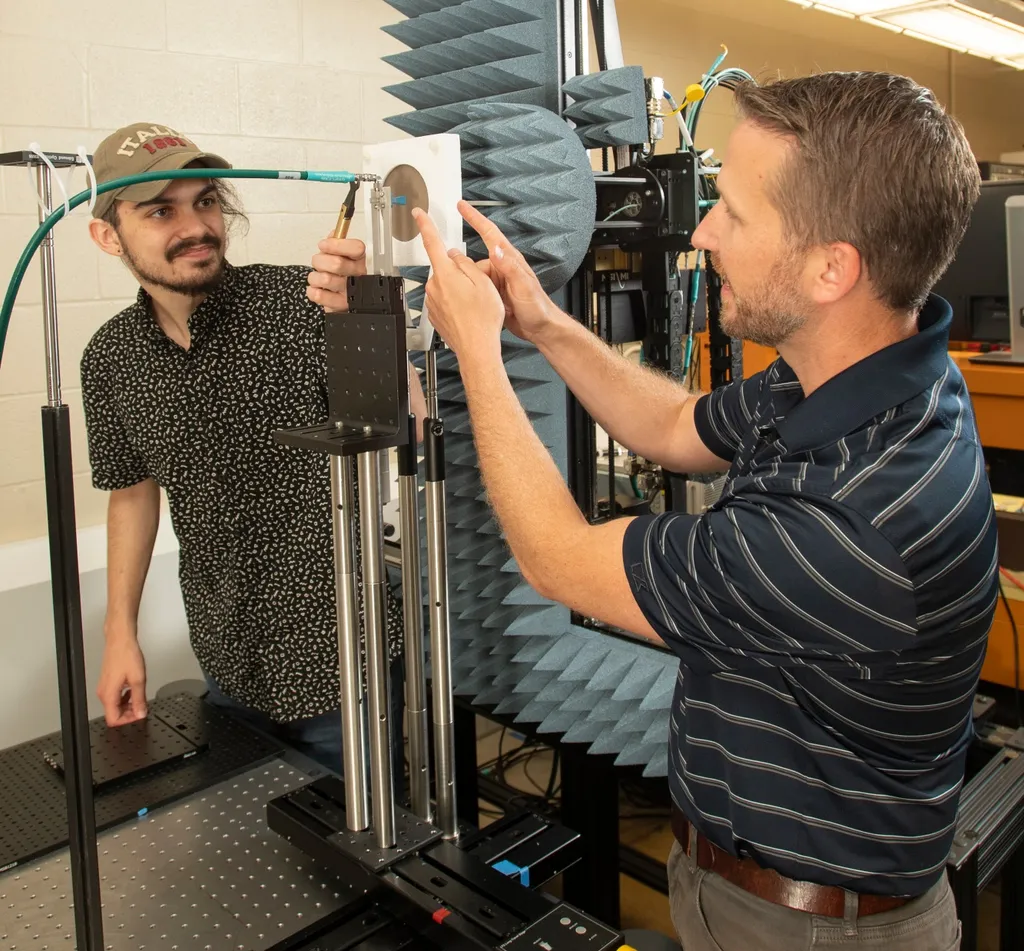In the rapidly evolving world of high-frequency communication, a groundbreaking advancement has emerged from the labs of the Southern University of Science and Technology in Shenzhen, China. Researchers, led by Wuzhao Li of the Shenzhen Key Laboratory for Additive Manufacturing of High-Performance Materials, have developed a novel approach to fabricate ceramic gradient refractive index (GRIN) metalenses using digital light processing (DLP) 3D printing. This innovation promises to revolutionize satellite communications, radar systems, and other high-frequency technologies, offering unprecedented performance and efficiency.
GRIN metalenses are highly sought after for their exceptional radiation performance, but the complexity of their design has posed significant challenges in manufacturing. Traditional methods often fall short in achieving the intricate structural features required for high-frequency communication applications. Enter Li and his team, who have tackled this issue head-on. “The key was to optimize the ceramic slurry composition and implement a dimensional compensation design strategy,” Li explains. This approach not only enhances printing accuracy but also paves the way for the production of high-fidelity ceramic GRIN metalenses.
The team’s breakthrough involves designing a GRIN metalens with two distinct types of subwavelength unit cells—Y-shaped and circular hole geometries—with a minimum feature size of 160 μm. By refining the slurry formulation and precisely compensating for design parameters, they achieved remarkable results. The fabricated metalens boasts a maximum gain enhancement of 18.4 dBi and a deflection angle of ±30° over a bandwidth of 37.84% in the W-band (75‒110 GHz). These capabilities highlight the potential of ceramic GRIN metalenses to significantly improve the performance of high-frequency communication systems.
The implications for the energy sector are substantial. High-frequency communication is crucial for satellite communications, radar systems, and other advanced technologies that rely on efficient data transmission and reception. The enhanced performance offered by these ceramic GRIN metalenses could lead to more reliable and faster communication networks, ultimately benefiting a wide range of applications, from weather forecasting to military surveillance.
“This research represents a significant step forward in the field of additive manufacturing and high-frequency communication,” says Li. “By overcoming the challenges associated with DLP 3D printing of ceramics, we have opened up new possibilities for the development of advanced communication technologies.”
The study, published in the *International Journal of Extreme Manufacturing* (translated as “International Journal of Extreme Manufacturing”), underscores the importance of interdisciplinary collaboration in driving innovation. As the demand for high-frequency communication continues to grow, the insights and techniques developed by Li and his team will be instrumental in shaping the future of the energy sector and beyond.
In an era where connectivity is paramount, this research offers a glimpse into a future where communication technologies are faster, more efficient, and capable of meeting the ever-increasing demands of our digital world. As we stand on the brink of a new technological frontier, the work of Li and his colleagues serves as a beacon of innovation, guiding us toward a more connected and advanced future.

